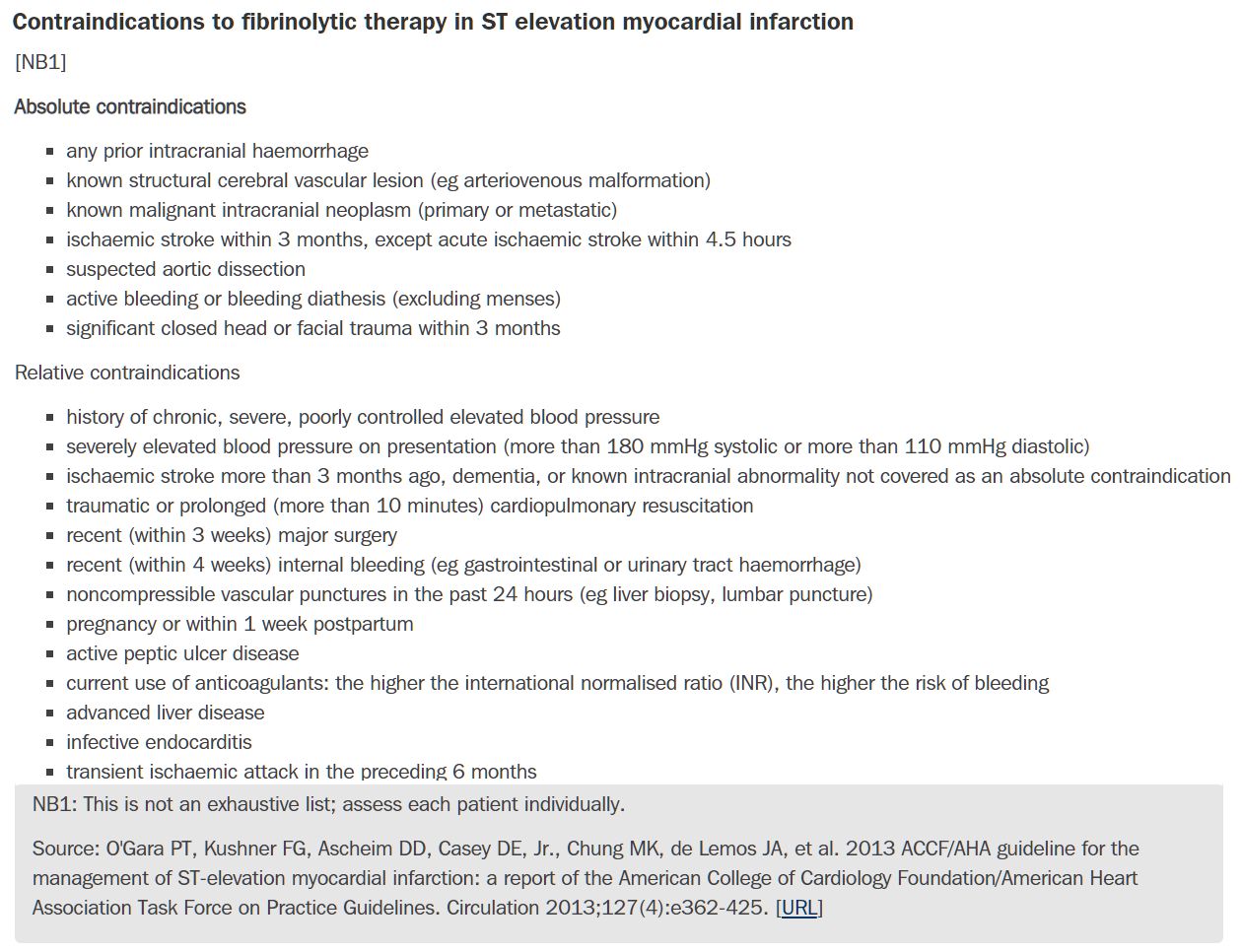ACUTE CORONARY SYNDROME-MANAGEMENT (E. FIBRINOLYTIC TX)
SUMMARY
1. A patient who receives fibrinolytic therapy should also be given a parenteral anticoagulant (enoxaparin or UFH) & dual antiplatelet therapy. UFH is used for patients with severe renal impairment or who have a high risk of active bleeding that may require rapid reversal of anticoagulation.
2. Contraindications to fibrinolytic therapy for patients with STEMI can be absolute or relative. Patients with an absolute contraindication should be transferred for PCI.
3. For patients with a relative contraindication, consider the risks and benefits of treatment.
4. For patients < 75 years consider: Alteplase, Reteplase or Tenecteplase.
5. For patients > 75 years consider using half the recommended dose of Tenecteplase to reduce the risk of ICH & do not give bolus dose of heparin.
6. After fibrinolytic therapy is given, patients should be monitored for arrhythmias including VF.
7. If bleeding occurs: seek haematological advice, reverse Heparin with Protamine, replace fibrinogen using cryoprecipitate or FFP, blood transfusion may be required.

Reference(s)
Wilkinson, I., Furmedge, D. and Sinharay, R. (2017). Oxford handbook of clinical medicine. Oxford: Oxford University Press. Get it on Amazon.
Feather, A., Randall, D. and Waterhouse, M. (2020). Kumar And Clark’s Clinical Medicine. 10th ed. S.L.: Elsevier Health Sciences. Get it on Amazon.
Hannaman, R. A., Bullock, L., Hatchell, C. A., & Yoffe, M. (2016). Internal medicine review core curriculum, 2017-2018. CO Springs, CO: MedStudy.
Therapeutic Guidelines. Melbourne: Therapeutic Guidelines Limited. https://www.tg.org.au [Accessed 2021].